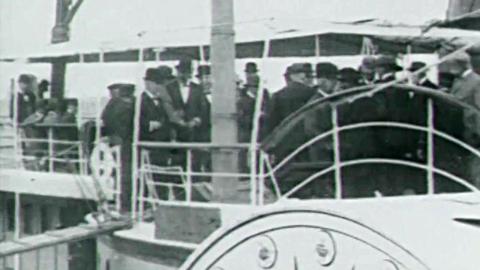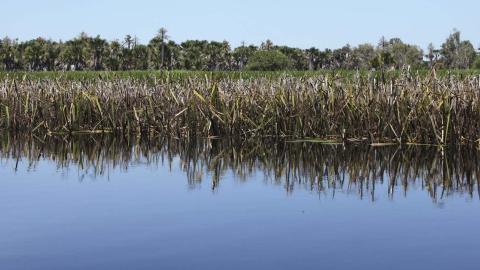
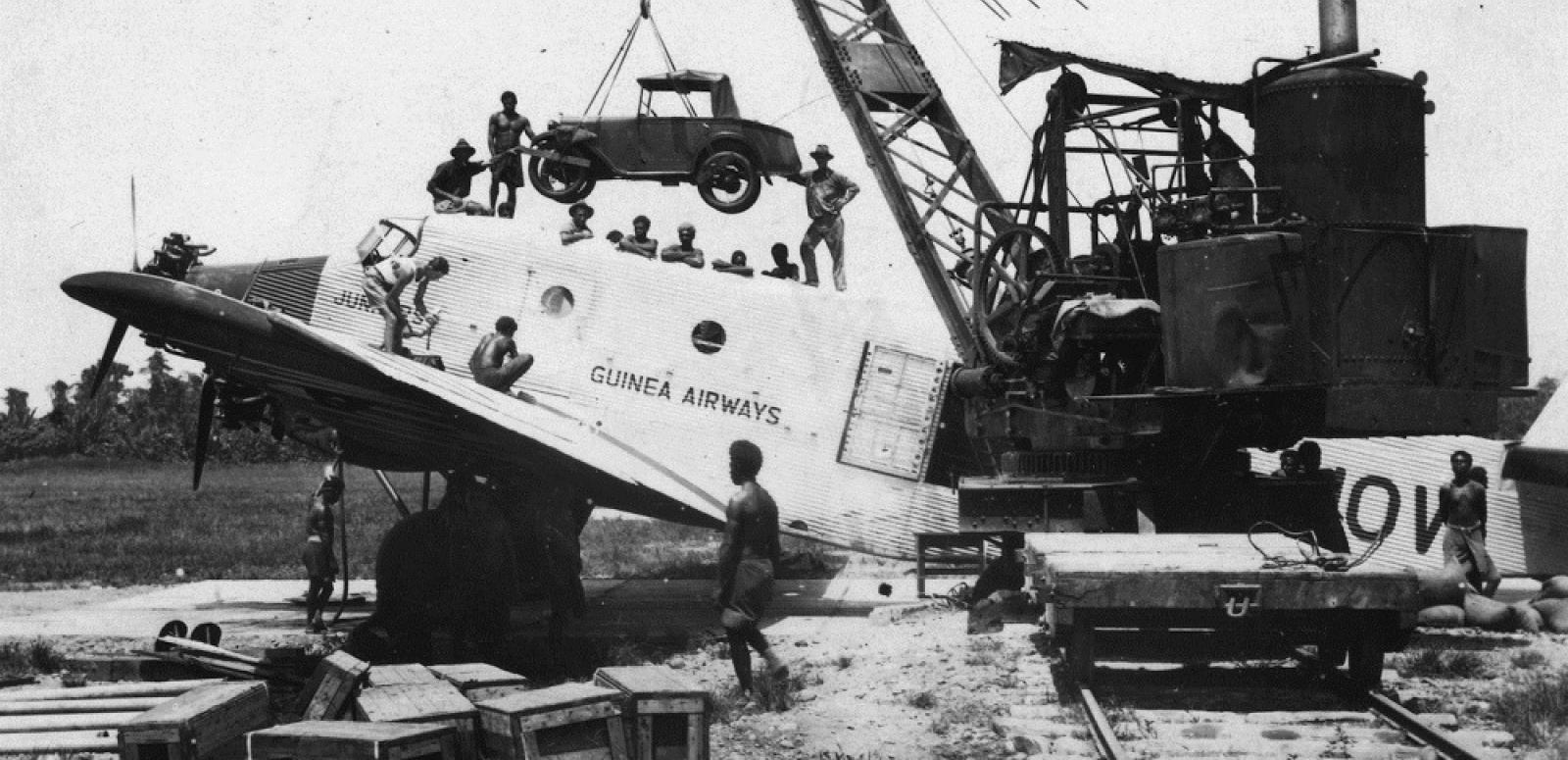
PNG's 40 years of independence
Leslie Waterhouse in 1930s New Guinea
This month as part of the NFSA’s celebration of Papua New Guinea’s 40 years of independence, historian and economist Michael Waterhouse presents two illustrated lectures about life on the New Guinea goldfields in the 1930s.
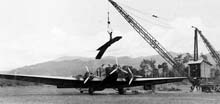
The lectures feature rare early footage from the NFSA collection and the Mitchell Library shot by his grandfather, Leslie Waterhouse. Leslie worked as a director of Bulolo Gold Dredging and Guinea Airways in the 1930s.
Michael is the author of Not a Poor Man’s Field: The New Guinea Goldfields to 1942 – An Australian Colonial History.
How did you come across your grandfather’s films?
I grew up knowing my grandfather had been involved in gold mining in New Guinea but I didn’t know a real lot about him. My grandfather left no written records. A cousin of mine asked, ‘Whatever happened to your grandfather’s films?’ I’d never seen them and knew nothing about them. He said that when he was a boy he’d seen them and that they’re terrific. So I thought, ‘Oh well, I’ll look out for them’. I found some of them in the Mitchell Library in Sydney.
The films had been taken by him with his camera and partly by an associate of his called Tom Yeomans who stayed up there. He was a miner. A fair bit of that film was in colour and had been donated by Tom Yeomans’ son after his death. I sensed that it wasn’t the whole lot. In 2004, I contacted the NFSA and we eventually found 13 reels in perfect condition.
In 2009, I sat down and began lining up the film and trying to put it into order. I not only reconstructed it chronologically but took the best film footage from each of the two institutions. I added intertitles describing the scenes and edited the footage into chapters.
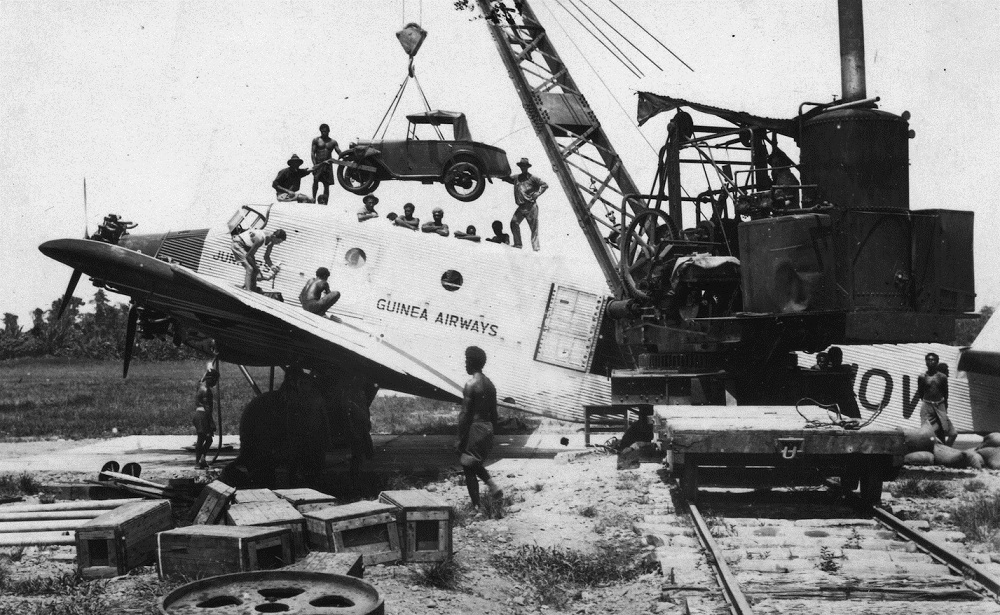
What were your first reactions to the film footage?
I was just bowled over. There were certainly some things which I’d never seen written about – it was quite clearly significant stuff. My grandfather was in a few frames here and there and I’d never seen film of him before.
On the one hand, I knew they were promotional films. They were documenting what Bulolo Gold Dredging was achieving. In the early 1930s, they were doing everything to get the show on the road – they were setting up, they’d made the decision to go dredging, they were buying the airplanes and building and constructing them onsite. They set world records in air freight. And they were documenting this. On the other hand, there was a genuine interest in the people and cultures of New Guinea. You’ve got to understand, New Guinea was not part of Papua. It was part of what became PNG but it was separate and only during the war did they come together. It was a different territory. It was a place that fascinated people.
What do the films reveal about interactions between local New Guineans and miners on the goldfields?
There’s some unique footage from May 1931 which is the only footage that exists of these local villagers who were accused of killing a miner, Hellmuth Baum, and his carriers. In the film, they’ve been arrested and are waiting to be transported down to the coast. These guys are standing around looking at the airplane without the faintest idea what they’re looking at – they’d never seen white people before, and suddenly they’re being loaded on this airplane and flown down to the coast (see still below). I show this footage in the lecture on Friday 18 September. I’m also screening what I suspect is the earliest film footage ever shot of the Sepik. I can pretty accurately date that to 1931-32.
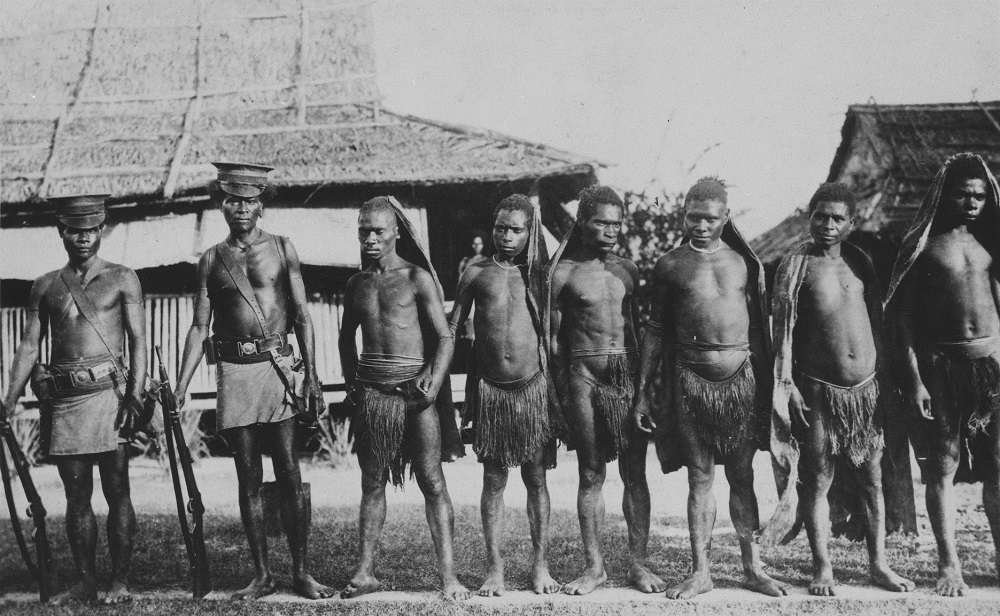
Baum’s ‘murderers’, May 1931
What sort of insights do the films provide into Australia’s colonial history?
The films provide just one view into a brief period in Australian colonial history. They give a sense of time and place. There’s not a lot of this film footage around. I want to get their stories out there – it’s not my story, it’s their story.
Michael Waterhouse will give two free illustrated lectures at the NFSA on 17 and 18 September 2015.
The National Film and Sound Archive of Australia acknowledges Australia’s Aboriginal and Torres Strait Islander peoples as the Traditional Custodians of the land on which we work and live and gives respect to their Elders both past and present.

